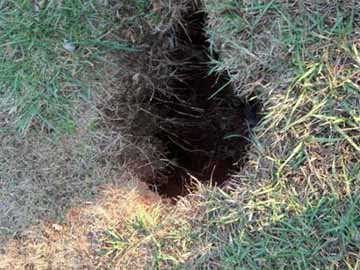Yes, a Water Leak Can Cause a Sinkhole: Insights According to Trenchless Solutions

Introduction
Beneath the surface of our daily lives, unseen forces and processes shape the world we live in. One such phenomenon that often goes unnoticed is the potential link between water leaks and the formation of sinkholes. Contrary to popular belief, the seemingly mundane occurrence of a water leak can indeed set in motion a series of events that lead to the creation of a sinkhole. In this exploration, we’ll shed light on the connection between water leaks and sinkholes and delve into the insights provided according to Trenchless Solutions, experts in addressing underground infrastructure challenges.
The Silent Culprit: Water Leaks
Water leaks, often dismissed as minor inconveniences, can be more insidious than meets the eye. When water infiltrates the ground due to a leak, it begins to interact with the underlying geological structure. Over time, the water dissolves minerals in the bedrock, creating voids or cavities beneath the surface. This gradual erosion weakens the structural integrity of the soil, ultimately leading to the formation of sinkholes.
Trenchless Solutions: Leaders in Underground Infrastructure
Trenchless Solutions, a prominent player in the field of underground infrastructure, brings a wealth of knowledge and expertise to the table. As pioneers in providing innovative solutions for pipeline rehabilitation and repair, Trenchless Solutions has been at the forefront of addressing the challenges posed by water leaks and their potential consequences, including sinkhole formation.
Insights from Trenchless Solutions
According to Trenchless Solutions, the key lies in understanding the dynamics of underground structures and the impact of water leaks on the integrity of the soil. The company emphasizes the importance of early detection and intervention to prevent the progression of water leaks into potential sinkhole disasters.
Trenchless Technologies: A Proactive Approach
Trenchless Solutions advocates for the use of trenchless technologies as a proactive approach to address water leaks and mitigate the risk of sinkhole formation. These technologies involve non-invasive methods of repairing and rehabilitating underground pipelines without the need for extensive excavation. By minimizing disruption to the surrounding environment, trenchless solutions offer a sustainable and efficient way to tackle water leaks before they escalate into more significant issues.
Case Studies: Trenchless Success Stories
To highlight the efficacy of trenchless technologies, Trenchless Solutions shares success stories where their interventions prevented sinkhole formation. By employing advanced methods such as cured-in-place pipe (CIPP) lining and horizontal directional drilling (HDD), Trenchless Solutions has demonstrated the capability to repair water leaks and strengthen underground structures, safeguarding communities from the potential hazards of sinkholes.
Collaborative Efforts for Sustainable Solutions
Trenchless Solutions underscores the importance of collaboration between industry stakeholders, local authorities, and communities to create sustainable solutions. By fostering a collective commitment to responsible infrastructure management and early intervention, the risks associated with water leaks and sinkholes can be significantly reduced.
Conclusion
In conclusion, the connection between water leaks and sinkholes is not a mere possibility but a reality that demands attention. Trenchless Solutions, with its dedication to innovation and expertise in underground infrastructure, provides valuable insights into mitigating the risks associated with water leaks. By acknowledging the potential consequences of seemingly minor leaks and embracing trenchless technologies, we can collectively work towards a safer and more resilient underground environment, ensuring that the ground beneath our feet remains stable and secure. And to answer this question can a water leak cause a sinkhole? Isyes, a water leak can cause a sinkhole.




